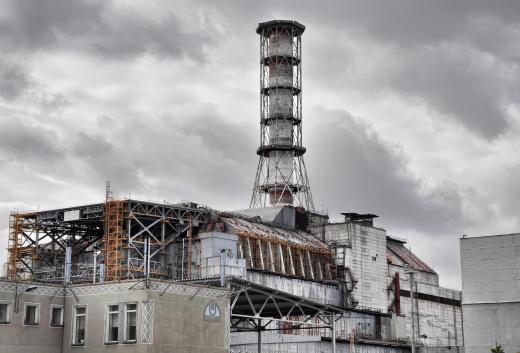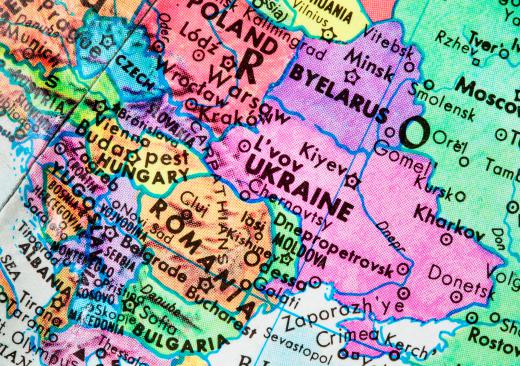What is Strontium?
 Mary McMahon
Mary McMahon
Strontium is a metallic chemical element that is very common in mineral compounds all over the Earth. It is perhaps most famous in the form of strontium 90, a radioactive isotope that is a byproduct of nuclear fission. This isotope was one of the major pollutants from the Chernobyl nuclear accident in the Ukraine in 1986. Pure forms of the element, along with its isotopes, have a number of uses, from metal alloys to medical imaging.
The element is classified in the alkaline earth metals, along with elements such as barium and magnesium. Like other metals in this group, strontium is a very soft, easily worked metal. In pure form, it is silvery and easily oxidized, since it is extremely reactive with air. Chemically, the metal is very similar to calcium, which makes it useful in the treatment of conditions like osteoporosis, since it can be absorbed like calcium to bulk up bone density. It is identified with the symbol Sr, and it has an atomic number of 38.

Traces of strontium were first discovered in the lead mines of a Scottish village called Strontian in 1787. Adair Crawford recognized that the element was unique in 1790, but it took several more years for it to be successfully isolated. Humphrey Davy managed to identify and isolate it in 1808, using the process of electrolysis. Because strontium is so reactive, the element is never found in a pure form in nature; compounds that contain it are mined in several locations around the world.

Several metal alloys are made with strontium, and the metal is also employed in pyrotechnics, due to its extreme explosiveness. Its isotopes are used in medical procedures such as bone scans and in the treatment of some cancers. In addition, this metal can be found in optics and some pottery glazes, and isotopes are used by archaeologists to date historically important sites and to study the history of climate change.

Because strontium will spontaneously catch fire when exposed to air, it is a fire hazard in its pure form. It should be stored in an inert environment such as mineral oil, and it should be handled carefully. Otherwise, the element does not appear to impact human health. Radioactive isotopes, such as those used in medical practice, are dangerous, however, and access to them is usually carefully controlled. People who regularly interact with the radioactive forms should be trained in taking the proper precautions, and they may be routinely tested for dangerous exposure levels.
AS FEATURED ON:
AS FEATURED ON:
















Discussion Comments
He already did. "Several metal alloys are made with strontium..." etc.
i think you should specify more about what it's used in. Like as an assumption, because it's highly flammable, could it be used in gunpowder? Fireworks, etc?
Post your comments